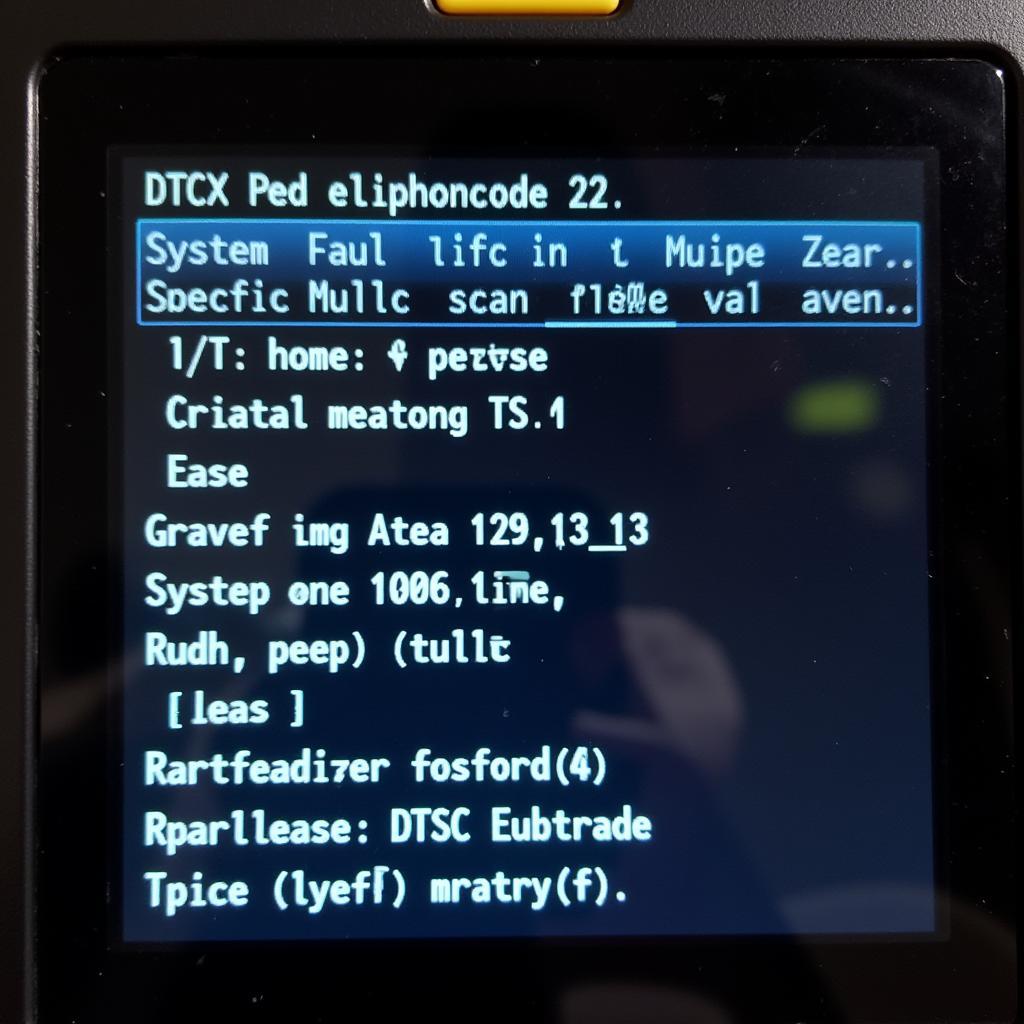Technology diagnosis is revolutionizing how we troubleshoot and fix car problems. From simple check engine lights to complex electronic control unit (ECU) malfunctions, understanding how to leverage these tools is crucial for both professional mechanics and car owners alike. This article delves into the world of technology diagnosis, equipping you with the knowledge and insights to tackle modern automotive challenges.
After the advent of On-Board Diagnostics (OBD), troubleshooting automotive issues has become significantly easier. These systems allow mechanics and car owners to connect to the vehicle’s computer and retrieve diagnostic trouble codes (DTCs). However, simply reading codes is just the first step. Effective technology diagnosis requires a deeper understanding of the systems involved, the potential causes of the codes, and the best approach to resolving the issue. Problems with imported cars can be particularly challenging due to the complexity of their systems.
Utilizing Advanced Diagnostic Tools for Technology Diagnosis for Car Problems
Beyond the basic OBD-II scanner, a range of advanced diagnostic tools can provide a more comprehensive understanding of your car’s health. These tools offer capabilities such as live data streaming, bi-directional control, and access to manufacturer-specific data. Knowing which tool is right for your needs and how to interpret the information it provides is essential for accurate Technology Diagnosis For Car Problems.
Understanding Diagnostic Trouble Codes (DTCs)
Diagnostic Trouble Codes are the language of your car’s computer. These alphanumeric codes provide clues to the potential source of a problem. However, relying solely on DTCs without further investigation can lead to misdiagnosis and unnecessary repairs. It’s crucial to understand that DTCs are indicators, not definitive answers. They point you in the right direction but require further diagnostic steps to pinpoint the root cause. Car problem diagnosis pictures can sometimes help visualize the problem area.
Decoding the DTCs for Effective Technology Diagnosis
Each DTC is structured to provide specific information about the fault. The first character indicates the system affected (e.g., P for Powertrain, B for Body, C for Chassis, U for Network). The remaining characters provide more details about the specific fault within that system. Learning how to decipher these codes is a fundamental skill in technology diagnosis for car problems.
 Decoding DTC Codes for Car Technology Diagnosis
Decoding DTC Codes for Car Technology Diagnosis
The Role of Software in Technology Diagnosis
Modern vehicles rely heavily on software, and diagnostic software plays a critical role in technology diagnosis for car problems. These programs provide access to a wealth of information, including wiring diagrams, component locations, and troubleshooting procedures. They can also perform advanced functions like module programming and coding.
“The future of automotive diagnostics lies in software. Mechanics need to embrace these technologies to stay ahead of the curve,” says John Smith, Senior Automotive Engineer at Future Auto Solutions.
Common Challenges in Technology Diagnosis for Car Problems
Technology diagnosis for car problems is not without its challenges. Intermittent faults, complex electrical systems, and the constant evolution of automotive technology can make diagnosis a complex process. Staying updated with the latest tools and techniques is essential for successfully navigating these challenges. Car sounds to diagnose problem can also be a helpful diagnostic tool, especially when combined with technology.
Overcoming Common Diagnostic Hurdles
A systematic approach to diagnosis is key to overcoming these hurdles. This involves gathering information, analyzing the data, and performing targeted tests to pinpoint the root cause of the problem. Don’t be afraid to consult resources like service manuals, online forums, or technical support lines. Collaboration and knowledge sharing are invaluable in the world of technology diagnosis.
“A good mechanic is a lifelong learner. The automotive industry is constantly evolving, and so should our diagnostic skills,” says Maria Garcia, Lead Technician at Advanced Auto Diagnostics.
The Future of Technology Diagnosis for Car Problems
The future of technology diagnosis promises even more sophisticated tools and techniques. Artificial intelligence, machine learning, and predictive analytics are poised to transform the way we diagnose and repair cars. These technologies will enable faster, more accurate diagnoses, leading to improved efficiency and reduced repair costs. Common problems that mechanics have when working on cars will likely become easier to diagnose and fix with these advanced tools.
In conclusion, technology diagnosis for car problems is an essential skill in today’s automotive landscape. Embracing these technologies and staying updated with the latest advancements is crucial for both professional mechanics and car owners. By understanding the principles of technology diagnosis, leveraging the right tools, and adopting a systematic approach, you can effectively troubleshoot and resolve even the most complex car problems.
Car parking problem solution is one area where technology is already making a big difference, although unrelated to car repair. We at AutoTipPro are always here to assist you. Contact us at +1 (641) 206-8880 or visit our office at 500 N St Mary’s St, San Antonio, TX 78205, United States.






Leave a Reply